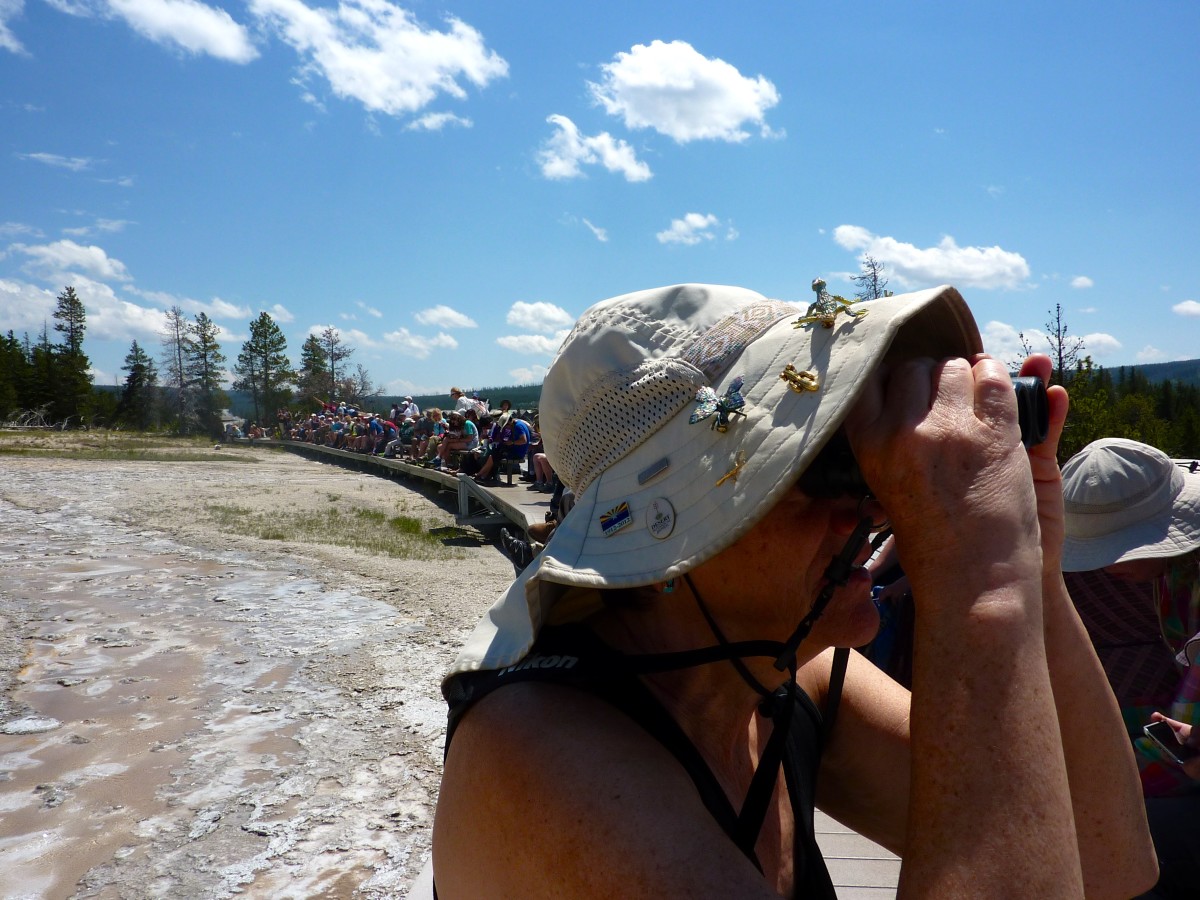A few more days and we head back to Yellowstone. With all that happens here in summer, leaving Arizona and our Sonoran Desert home is bittersweet.
I’ll miss my quiet early-morning walks at the Desert Botanical Garden. The silence before visitors arrive. There is a hush, except—if you listen for it—
the sound of a Verdin in the bush . . .
a lizard scurrying through the leaves . . . a Thrasher probing around the rocks for a morsel . . .
a Thrasher probing around the rocks for a morsel . . . or a little ground squirrel after seeds in the shrubs.
or a little ground squirrel after seeds in the shrubs.
My greatest joy in doing our tours at the Botanical Garden is to watch as the “light” goes on when folks move from seeing this Desert as a barren, brown, hot environment to one of abundance and incredible array of different shades of greens, soft grays, yellows. I’ll miss that eye-opening moment when a visitor begins to glimpse just how special the Sonoran Desert really is. This Desert, with its unique plant and animal adaptations, has evolved over eons to deal with its low amounts of water, its aridity and those fluctuating temperatures. Such distinctive ways plants and critters have adapted to obtain and hold onto life-giving water.
I’ll miss the drama of our totally awe-inspiring sky as the monsoon storms begin arriving. What a joy to behold the monsoon season with its ferocious storms dumping so much water from the sky in such a short period. Those dramatic storms with their incredible winds of dust originating from eroded mountains of thousands of years ago. Yes, it gets hot, but that heat and dryness is what brings those revitalizing summer rains.
I’ll miss the burst of life that so quickly comes within such an amazingly short time after the rains arrive. How the Ocotillo will go from looking like a bunch of dead sticks to bursting out with the characteristic small leaves of desert plants.  The ways plants and critters obtain and hold onto that water never ceases to amaze. Those small leaves hold onto the water and, in the creosote bush, a resinous coating around each leaf locks in moisture. The amazing tough outer cuticle of cactus reminds me of a cucumber.
The ways plants and critters obtain and hold onto that water never ceases to amaze. Those small leaves hold onto the water and, in the creosote bush, a resinous coating around each leaf locks in moisture. The amazing tough outer cuticle of cactus reminds me of a cucumber.  The expanding pleats of the saguaro keep it from bursting as it rapidly drinks up water—whenever it comes.
The expanding pleats of the saguaro keep it from bursting as it rapidly drinks up water—whenever it comes.
The fascinating desert creatures have their own adaptations to living in the Sonoran Desert. The little kangaroo rat and pocket mouse don’t need to drink water because they receive all the moisture they require from the seeds they eat.

I’m captivated by how the spadefoot toads dig down into the ground and sleep until awakened upon hearing the pounding of the desert monsoon storm as the rains of summer begin. They wake up, dig their way out, and begin to mate and make babies before the waters once again evaporate to nothing.  As the temperatures sore, our desert birds have their own ways of keeping cool. They don’t sweat like we do but open their mouths and “flutter” their neck muscles.
As the temperatures sore, our desert birds have their own ways of keeping cool. They don’t sweat like we do but open their mouths and “flutter” their neck muscles.

This helps them lose heat, making them look like they’re panting.
Yes, I’ll miss my Sonoran Desert home. But I’ll be returning to my Yellowstone summer home and tribe. Those of us who keep coming back to the amazing and totally different environment of our country’s very first National Park, those craggy mountains of the Rockies, and the critters that have also adapted to another unique environment—the thermal areas of Yellowstone.

I live in another totally different kind of environment in the summer and return to yet another unique and different type of habitat for winter. I look forward to returning to both places. They are so totally different and unique in all the world. And I’m blessed to be able to turn folks onto the the wonders both offer.
